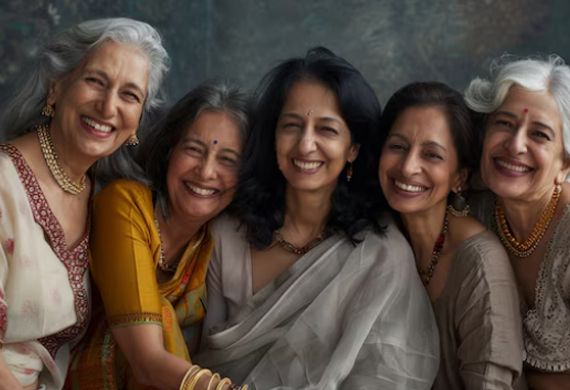
Kohima, Vizag & Bhubaneswar Ranked Safest Cities for Women in India
By: WE staff | Friday, 29 August 2025
- Kohima, Visakhapatnam, and Bhubaneswar are the safest cities for women according to 'Index on Women Safety (NARI) 2025'
- The survey included 31 big cities of all the states
- Among metro cities, Mumbai is one of the top seven safest
Visakhapatnam, Bhubaneswar, and Kohima were the most efficient among seven cities ranked safest for women in the 'Index on Women Safety (NARI) 2025', a survey of 31 major Indian cities revealed. Ranchi and Srinagar were at the bottom, with Mumbai at the bottom of seven safest big city lists.
Delhi and Kolkata were on the list at the bottom of the safety rankings. Other northeastern Indian cities, such as Aizawl, Gangtok, and Itanagar, were also placed among the safest, with good correlations to greater gender equity, infrastructures, policing, and civic engagement.
Faridabad, Patna, and Jaipur were also placed at the bottom of the city list for having poorer infrastructure, patriarch values, or poor institutional responsiveness.
The poll, commissioned by data science firm Pvalue Analytics and representing the views and experiences of 12,770 women, established the country's national average score at 65 percent. Cities were deemed to be "much above," "above," "below," or "much below" this benchmark.
The report was presented by National Commission for Women (NCW) chairperson Vijaya Rahatkar, who asserted that a secure setting is crucial to developing an inclusive and developed India, stating that NCW will implement the recommendations to enhance women's safety.
Harassment prevalence was high, 7 percent of the women having experienced at least one incidence in 2024, and the most exposed were women aged less than 24 years (14 percent indicated that they had been harassed).
The most common was verbal harassment (58 percent), followed by physical, psychological, economic, and sexual harassment.
Neighborhood’s (38 percent) and public areas (29 percent) were the hotspots. Women's responses were varied: 28 percent confronted the harassers, 25 percent left the area, 21 percent hid in crowds, and 20 percent reported to the police.
NARI Index assessed city safety in several aspects: infrastructure, incidence and reporting of harassment, safety within specific fields (neighborhood, transport, education, work place, health, recreation, internet), and confidence in authorities.
Most Viewed
- 1 Women's Health Startup HerMD Closing Doors Amid Industry Challenges
- 2 5 Famous Women in Indian Armed Forces
- 3 Saudi Women No longer Require Male Permission for Clothing Choices, says Prince MbS
- 4 Kolkata Medtech Startup Innovodigm Raises Rs 5.5 Crore Seed Funding Led by IAN Group
- 5 Yamunanagar's Kashish Kalra Honoured after Securing 111th Rank in UPSC Civil Services Exam
- 6 Madurai Appoints Its First Woman Corporation Head
- 7 IAS Vijayalakshmi Bidari Appointed as the new Nagpur Divisional Commissioner
- 8 American Entrepreneur Lucy Guo Overtakes T Swift to become Youngest Female Billionaire
- 9 ICC Women's World Cup 2025 Trophy Showcased at Indore's Holkar Stadium
- 10 Aparna Saxena's Beauty Venture AntiNorm Launches in India
- 11 Vidya Nataraj Co-Founded BlueStone Jewellery & Lifestyle files IPO
- 12 5 Women Freedom Fighters of India
- 13 Dr. G Krishnapriya appointed as CEO for Trichy
- 14 M3M & Sirona Partner to Introduce Menstrual Hygiene Vending Machines in 15 Locations
- 15 Punjab Govt launches SHE Cohort 3.0 Supporting Tech-led Women Startups
- 16 Indian origin Lawyer, Sweena Pannu appointed as the US New Superior Court Judge
- 17 The Aurora Tech Award recognizes 4 Indian Women-led Startups
- 18 Kerala's Republic Day parade featured an all-female tableau
- 19 Manisha Kabbur Becomes Karnataka's First Woman International Karate Coach
- 20 Director K. S. Ravikumar's Daughter Maalica Ravikumar Launches Life Coaching Company 'Evergrowth Academy' for Women
- 21 Leezu's Raises Pre-Seed Funding to Accelerate Growth in Sexual Wellness Industry
- 22 Sattu: Super-easy summer drink for PCOS gut healing
- 23 Swathi Nelabhatla creates Sitha App, India's First Women-Exclusive Gig Platform
- 24 7 Timeless Female Kathak Dancers & their Iconic Legacies
- 25 Meet 7 Iconic Women Architects of Modern India & their Most Impactful Work
- 26 This Woman-led Insuretech Startup is Helping Bridge the Education Financing Gap in India
- 27 Women Leaders Share Lessons Learnt from India Women's WC Win
- 28 5 Enterprising Women Founders Powering Singapore's Tech & Innovation Landscape
- 29 4 Women. 4 Stories. One Vision for Smarter, Stronger Healthcare
- 30 Global Gender Gap Narrows to 68.8%, But Full Equality 123 Years Away: WEF Report 2025
- 31 Changemakers: 7 Women Entrepreneurs Taking the Make in India Movement Forward
- 32 Meet Lucy Guo, The Youngest Self-Made Female Billionaire Disrupting Tech
- 33 How Women are Driving India's Festive Online Shopping Surge


.jpg)



